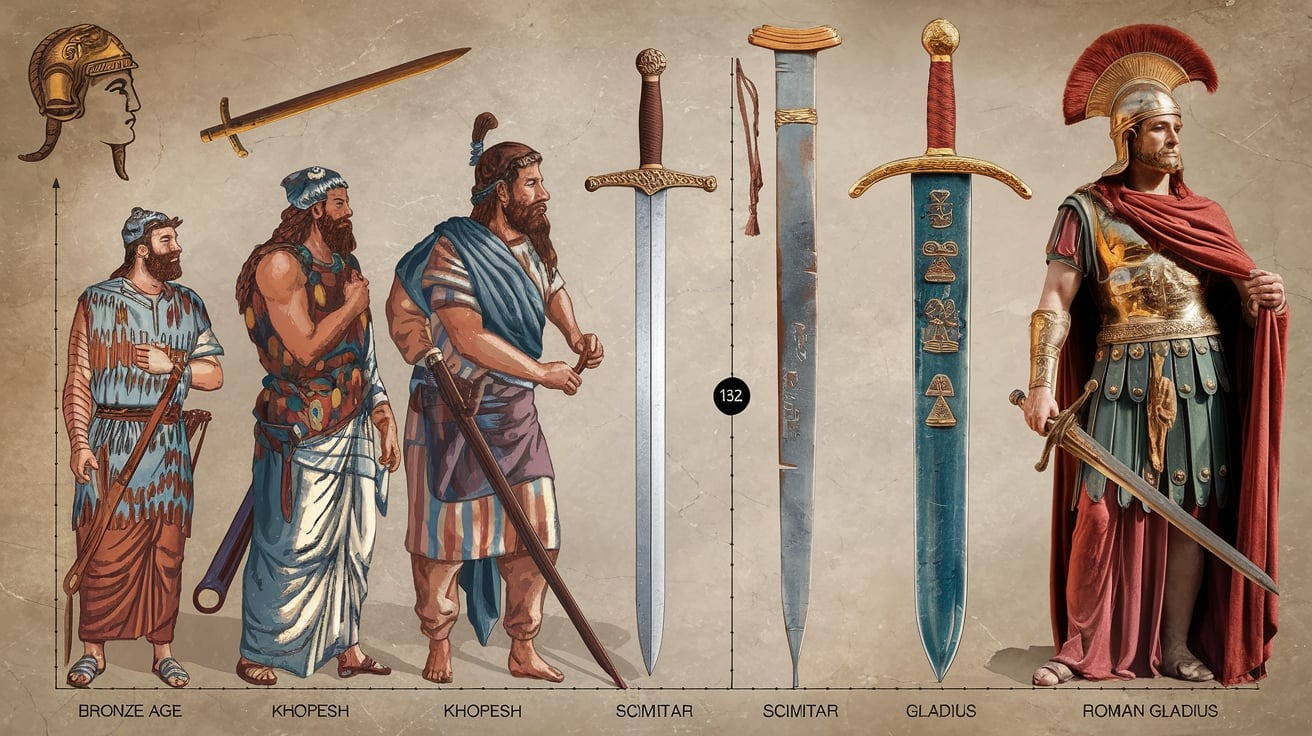Blog
Who Invented the Sword? Exploring Its Origin

The sword is one of the most iconic weapons in human history, often associated with bravery, chivalry, and warfare across centuries. But who invented the sword? To answer this question, we must dive deep into ancient civilizations, metallurgy, and the gradual evolution of tools into weapons. This blog explores the origins of the sword, its early inventors, and how this tool shaped human history.
The Origins of the Sword: Early Beginnings
In primitive ages long gone, when swords were unheard of, early men used very rudimentary implements as sharpening stones or hardy wood sticks to prevail. Sword-like implements made their first appearance during the Early Bronze Age, circa 3300 BC, changing from extending daggers primarily used for hunting and protection. The actual progress of sword making happened together with the evolution of metallurgy, in particular, copper was introduced, and then bronze, and even later iron which gave an opportunity to produce longer and tougher blades that could stand fierce battles. It was at this time that the sword, having transformed into a deadly instrument of war, was created.
Who Invented the First Sword?
The invention of the sword cannot be attributed to a single individual or civilization, as various cultures developed swords independently. However, archaeological evidence points to the Sumerians, around 3000 BC, as one of the earliest civilizations to create swords. Working with bronze, they crafted weapons stronger than stone or wood, making them ideal for combat. Some of the earliest swords were discovered in the Royal Tombs of Ur, a Sumerian city-state, where these weapons were often symbolic, buried with high-ranking individuals as markers of status and power rather than for practical use.
The Evolution of the Sword in Ancient Civilizations
After the Sumerians, several other ancient civilizations began to refine sword-making techniques, each adding their own innovations to the craft.
1. Egyptians: Mastering Bronze Weaponry
The Egyptians are known for their khopesh, a curved sword that dates back to around 2500 BC. This distinctive weapon had a sickle-like shape and was highly effective in battle. The khopesh was not only a weapon but also a symbol of royalty and authority, often depicted in the hands of pharaohs and deities.
2. Chinese and Indian Swords: A Fusion of Culture and Warfare
In ancient China, bronze and later iron swords emerged during the Shang Dynasty (1600–1046 BC), designed for thrusting and slashing. In India, advanced metallurgy produced the khanda and talwar, and India’s invention of wootz steel led to the renowned Damascus steel.
3. The Rise of the Iron Sword: Ancient Greece and Rome
Widespread usage of iron swords began around 1200 BC thereby beginning the Iron Age. The Greeks and Romans were among other civilizations that excelled in iron sword making. The Greeks had a xiphos; this was a short sword with the shape of a leaf that was wielded by Greek hoplite soldiers. The Romans soon introduced the gladius, a small sword primarily used for thrusting which became quite popular among Roman legion. Gaudy as it may look, it was very light and also very strong and suited very well to hand-to-hand fighting.
Swords in the Middle Ages: The Dawn of Steel
The real breakthrough in sword-making came during the Middle Ages with the development of steel. Unlike iron, steel is much stronger and more flexible, allowing for longer and sharper blades. The medieval period gave birth to several iconic sword types, including the longsword, broadsword, and the katana in Japan.
1. European Knights and the Longsword
During the medieval period in Europe, knights and warriors favored the longsword, mastering the art of fighting on horseback. These double-edged swords were effective for both slicing and thrusting, and their longer length provided an advantage in disarming opponents in combat
2. The Samurai Katana: A Masterpiece of Craftsmanship
Somewhere else in the world, there existed warriors from the Japanese clans called Samurai. It was during this period that the samurai cult heavily developed the art of sword making by creating the so-called katana, a single edge, curved, fine and well balanced sword. The katana was more than just a tool of destruction. It was, among other things, the soul of the samurai and the philosophy of the warrior class, Bushido.
The Invention of the Sword: A Global Phenomenon
Although it is hard to credit one particular individual with being the first of the sword, it is apparent that many people from all over the world have had a role in creating and perfecting this weapon. The sword changed over thousands of years, beginning with the bronze swords of Sumerians, and gaining its most developed forms in the Japanese katana and European longsword through the means of progress in metalworking, strategies of war, and the significance of cultures.
Conclusion: The Sword as a Symbol of Power and Honor
The sword is more than a weapon; it symbolizes power, honor, and technological progress. Though modern firearms dominate today, its legacy remains strong in history, mythology, and culture. From ancient Sumerians to medieval knights and samurai, the sword shaped civilizations and continues to represent strength and skill across generations.


